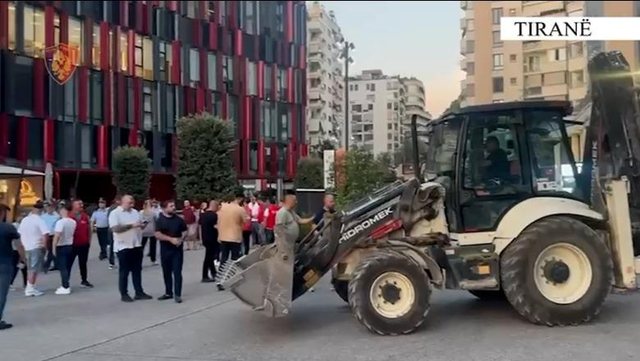
Tirana today: Pull up the umbrellas and plant concrete!


Yesterday I posted an article about the urban planning scandal in Milan, which resembles, although on a much smaller scale, the urban planning massacre that took place in Tirana. The article received few reactions. Fewer than my detractors on social media because I was against the "action" to liberate public spaces. I am against occupation and in favor of liberation, but not everywhere and not for every space. The point is, the cleanups at the Arena Stadium are ridiculous and harmful to business and community life.
In Tirana, public spaces and greenery were not killed by the owners of the premises and the tents, awnings or mobile structures placed to protect the cafes from the wind, rain and sun. Tirana was destroyed by Edi Rama, who led it for 11 years as mayor, from 2000 to 2011, (we are removing the 4 years of Basha, who slept, as all the revivalists like to say) and the 9 years of Erion Veliaj with millions of square meters of construction per year. The capital is being given the final blow again by Edi Rama as the all-powerful leader of everything. Especially the KKUT, which is approving multi-story towers while ignoring every law and urban plan, (Tirana has had an urban plan approved since 14.4.2017.)
People should know that urban planning is not just the design of roads, sidewalks or a bunch of building regulations. Urban planning is the art of creating spaces that serve people. A good city is not measured by the number of skyscrapers but by the liveliness of the streets, by the voices of the people who fill it. A city is alive when the sidewalks are full of life, when people feel welcome, when meetings and conversations happen naturally in public space.
But what is happening in Tirana today? After the actions to "liberate public spaces", many streets and sidewalks are empty. The atmosphere is completely similar to the pandemic period: silence, emptiness, lack of rhythm of life. Once, the area around the "Air Albania" stadium was a meeting point, a place where people drank coffee, took walks and gave energy to the entire city, where children played. Today, that space has remained deserted, a stage without spectators. Not to mention the costs for businesses that pay taxes and rent. Even higher than other areas of the capital. The question naturally arises: Is this a good thing for the city and its people?
Urban history teaches us the opposite. The most successful cities are those that give space to people, not to emptiness.
In the 1960s, Copenhagen was dominated by heavy traffic and empty sidewalks. The authorities decided to close some streets to cars and create pedestrian zones, such as the famous Strøget. The result? The streets were filled with life, cafes, street artists and social activities. Architect Jan Gehl once said: "We shape cities and then they shape us."
Barcelona created "superblocks" where streets were closed to cars and opened to people. Initially there was opposition, but they later turned into lively spaces, with games, activities, markets and cultural events. Today, the residents of El Poblenou call this model an example of a city that belongs to the people.
Until 2009, Times Square was one of the most chaotic areas due to traffic. A radical decision closed it to cars and transformed it into a public space with benches and events. The result? Today it is a symbol of urban life where millions of people meet, walk and enjoy the city.
Bogotá in Colombia is considered the most successful experiment in transforming a city. Especially for the creation of green spaces. Every Sunday, Bogotá closes over 100 km of roads to cars and opens them to people, bicycles and sports activities. The atmosphere resembles a big party, showing that people want spaces to live, talk and meet and not just to pass by.
These examples show a universal truth: when you give a city living spaces for people, it flourishes; when you strip them of life, it dies. Urban planning should not be sterile, cold and technical. It should be humane. An empty sidewalk may look neat, but it is emotionally dead. A city without people is just a collection of concrete. That seems to me to be what Tirana has become today.
Therefore, the question arises: Do we want a city with empty sidewalks or a city that breathes and lives? Even Copenhagen, Barcelona, New York and Bogota show, the answer is simple: spaces should belong to people. And return to say. If the "human" factor is not taken into account, any intervention is futile. I am not saying this. The best urban planners in the world say this. And our urban planners should say it too, who, with two or three exceptions, are silent due to small and large interests. Shameful! Seeing how Tirana is being destroyed. How it is mercilessly concreted in every space. If the tents are torn down, the concrete of the towers is eternal.
If the goal is to create cities for people, then urban policy should be measured by the question: are the streets livelier after the intervention, or quieter? Tirana today, in many areas, is giving a worrying answer.

The Ukraine summit that ignored the tough questions
ideas
top
Alfa recipes
TRENDING 
services
- POLICE129
- STREET POLICE126
- AMBULANCE112
- FIREFIGHTER128



























